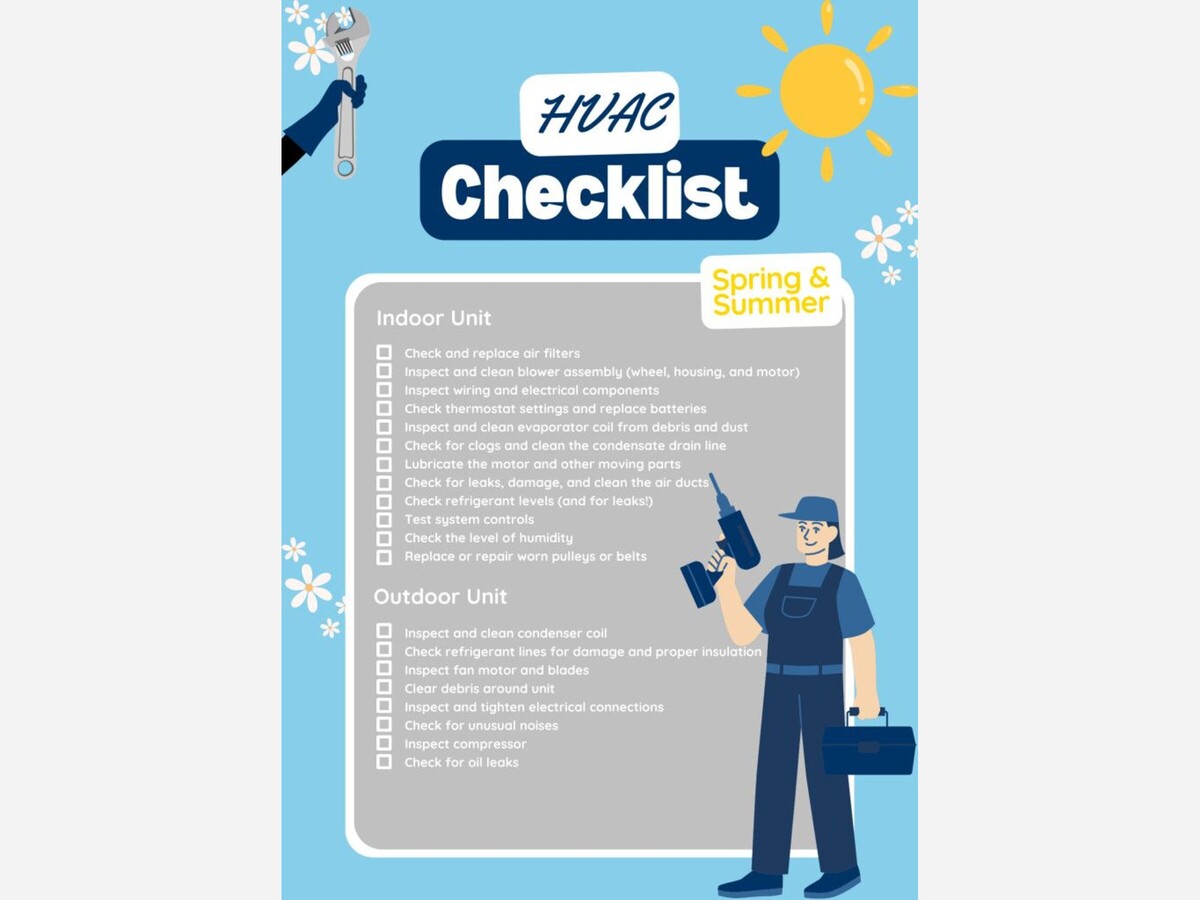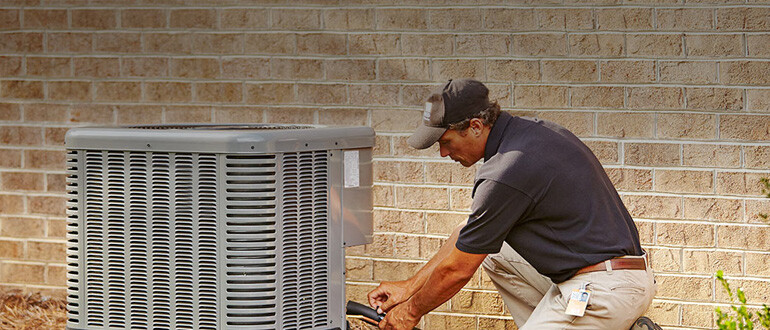Image

HVAC Tips: The Only HVAC Maintenance Checklist You’ll Ever Need!

Look, if you’ve been juggling information from a bunch of HVAC maintenance checklists looking for answers to your leaking furnace or dead AC unit, but all you’ve ever found was a generic blog that ended with a sales pitch, we totally understand your pain.
It seems like all these HVAC tips and tricks blogs aren’t even written by certified HVAC technicians (spoiler alert - they’re not).
We get you! We’re here to help you (actually help you) with your HVAC issues. Sometimes, there’s an emergency that needs to be patched up right away and you don’t have time to call an HVAC contractor. Other times, you’re just fighting with the darned thermostat to get it to the right setting.
Wherever you are in your HVAC journey, we’ve got you covered. But…
Before we get started: We’ve broken down this list of HVAC tips and tricks by category so that you can find the exact answer to your air conditioning or heating questions. The first half of this HVAC maintenance checklist is broken up by where you are in life (beginner, homeowner, renter). The second section consists of seasonal HVAC tips to help you figure out the best time of year to perform preventative maintenance. Finally, we included some tips for technicians to best serve their customers.
 Leave It To The Pros
Leave It To The ProsWithout further adieu, here’s our comprehensive list of the only 31 HVAC tips and tricks you’ll ever need to know:
Here’s a pet peeve: People who assume you’re an expert. Yeah, at PIPCO AC, we’re expert HVAC technicians, but we understand that not everyone is. We’re going to start this section off with the fundamentals for all of you HVAC beginners out there.
Disclaimer: This is for true HVAC beginners who have never had to deal with an HVAC issue. If you already know what a furnace looks like or where to find your ductwork, please skip ahead to the more technical HVAC tips and tricks.
HVAC stands for heating, ventilation, and air conditioning.
9 basic components make up a complete central air and heat system. These components are the furnace, the heat exchanger, the evaporator coil, the condensing unit, refrigerant tubes, the thermostat, the ductwork, the vents, and the heat pump. (Don’t worry! We’ll explain these parts in detail further down the list.)
The furnace is your heating unit. Furnaces usually run off electricity or natural gas. There are pros and cons to both, but we’ll cover that in another section. You can find your furnace hiding in your basement, garage, or utility closet. Your furnace’s main function is to heat air and move it into your ducts to warm your house. (Fun fact: Furnaces are commonly mistaken for boilers, but they’re separate appliances).
Here's a great example of a brand-new Lennox furnace in a utility closet.
This is not part of your furnace although you can find it nestled inside your furnace. While the furnace pushes hot air into your ducts, the heat exchanger is the one converting cold air into hot air.
Another resident inside the furnace, the evaporator coil absorbs any heat from air passing over it to blow cool air through your vents and into your home.
Your condensing unit serves a similar purpose as your evaporator coil but you can find the condensing unit outside, usually on the side of your house. However, as the evaporator coil absorbs heat, the condensing unit gives off heat (think of it as the exhaust pipe for your home when you’re trying to cool it).
If your AC unit doesn't look as clean as this, it's time to schedule an HVAC installation.
Refrigerant tubes connect your evaporator coil to your condensing coil. Refrigerant tubes are typically made of metal and are designed to hold refrigerant and to connect the indoor and outdoor units.
Your thermostat is that little device mounted on the wall somewhere inside your house that allows you to control your home’s temperature (don’t ask us where to find your thermostat, there’s no rule as to where they’re placed - they could be anywhere!). Did you know you can get a smart Wi-Fi-connected thermostat that allows you to program the temperature of your home from your phone?
There's more than just Nest when it comes to smart, wi-fi-connected thermostats. Stay connected to your home with your smartphone!
Your home’s ductwork is what allows the conditioned air from your furnace or AC unit to be distributed around your house. Ductwork in Maryland homes is usually found overhead, running through attic and ceiling space.
Air vents allow your heated or cooled air to enter your living space from the ductwork.
 Contact The Pros, It's Hot
Contact The Pros, It's HotA heat pump works for both heating and cooling. In the summertime, heat pumps pump hot air out of your home, and in winter, heat pumps do the exact opposite.
This section is mainly directed at new homeowners seeking HVAC advice but it applies to all homeowners.
If you’re a new homeowner, you need to know what kind of HVAC system you have. The typical system is a central air conditioning system which has all of the components listed above in our HVAC tips for Beginners section. Your home could also have a ductless mini-split system or even a window-attached wall unit (yikes!). You should also know whether your furnace is electric, or natural gas, or if your home uses a heat pump or boiler system.
If you’ve just moved into your home, change the air filter. Your home was most likely listed for a few months before you purchased it, and even though the air conditioner probably wasn’t running all that often, it’s still a good idea to start with a fresh clean air filter.
Your condenser is usually in your side-yard and is easily forgotten. Over time, shrubs and debris can grow or build up around your unit, limiting its airflow, and making it work harder to cool your home.
Many new homeowners are guilty of this one. To save energy, homeowners close the vents in rooms they don’t use thinking it will save them energy. In reality, this makes your HVAC system less efficient. Heat likes to distribute itself evenly within an object. When that object is your home, heat will get into that closed-vent room anyway, but it means your HVAC system will work harder to create an even temperature around the house.
Keeping air vents open allows for equal temperature distribution throughout your home and keeps your HVAC system running efficiently. Bonus points for keeping your vents clean to avoid allergies and blockages.
Did you know most home inspectors don’t check ductwork? What this means for a new homeowner is that you won’t know if your ducts are dirty or in need of repair. If your home seems dusty, or you notice your HVAC system making loud noises as if it is working harder than it should, you should check your ducts. Chances are, they’re just dirty, but on the off chance that your ducts are leaking air, you need to make sure to call an HVAC technician to patch or replace your ducts.
As a new homeowner, you can’t rely on your parents or your landlord to fix any appliance issues in your home - that’s your responsibility now. Unless you work as a contractor, chances are you don’t have a strong relationship with one. This goes for all home improvement contractors, but trust us when we say that your HVAC contractor should be top of the list. HVAC systems have a lot of small moving parts and play a huge role in your home’s comfort. The most common home issue is related to HVAC so make sure you’re not calling a stranger when you need to service your air conditioning or heating unit. A strong relationship with an HVAC contractor will save you thousands during the duration of your homeownership and your contractor will be very familiar with your home, your HVAC system, and your expectations for price and service.
Manual J is the calculation used to make sure you’re getting the right size HVAC system for your home. It’s a very complicated calculation and we don’t expect you to know how to do one, but you should expect your HVAC contractor to know how to do it. Running a manual J for your new home is extremely important so that you can install the right HVAC system, otherwise, your system may not run efficiently or have trouble heating or cooling your home.
CALL PIPCO TODAY, THEY HAVE BEEN SERVING HUNT VALLEY OVER 50 YEARS.